
Dr. Lindsay Alfano has expertise in the care and evaluation of patients with neuromuscular disease. She is integral in planning and designing clinical trials for rare and ultrarare disorders and contributes to data driven trial design through several natural history and clinical trial readiness initiatives. Dr. Alfano serves on an international consortium with the aim to standardize training across global trials. Her research goals focus on reducing the burden of testing through development of optimal assessment tools to measure change in movement abilities.
Outcome measure assessment and live patient presentation
This course is intended to provide an overview of the approach to a patient evaluation. The path to diagnosis and key elements of the physical examination and decision-making process will be reviewed. Live patients will be in attendance to provide their experience and perspective, as well as enable demonstration of key examination and evaluation elements. General recommendations for ongoing care considerations to ensure proactive management of the changing patient condition to maximize independence and manage decline with dignity will be presented. This interactive session is designed to engage attendees and pull together key themes across the pre-Congress teaching course.

Carsten Bönnemann is a pediatric neurologist at the National Institute of Neurological Disorders and Stroke/NIH. Translational work in his group centers around early onset neuromuscular disorders such as the congenital myopathies and congenital muscular dystrophies with a focus on the development of molecular and gene and transcript directed treatment approaches.
How to assess children
The clinical evaluation of the infant and young child with neuromuscular weakness remains an indispensable skill even in the age of next generation genetic testing, both for pre-testing as well as post testing assessment. A systematic approach to the symptoms and signs of neuromuscular weakness early in live is governed by considering anatomy, physiology, and disease categories and their implications for the resulting clinical presentations - and knowledge how to properly recognize and elicit the relevant clinical findings. This presentation will illustrate this concept with many clinical examples and videos.
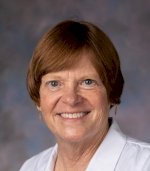
Anne M. Connolly, MD, is chief of the Division of Neurology at Nationwide Children’s Hospital, professor of Pediatrics at The Ohio State University College of Medicine, and a member of the Center for Gene Therapy in the Abigail Wexner Research Institute. She has worked in both basic science space and has worked to develop outcome measures in boys and men of all ages with DMD.
Outcome measure assessment and live patient presentation
This course is intended to provide an overview of the approach to a patient evaluation. The path to diagnosis and key elements of the physical examination and decision-making process will be reviewed. Live patients will be in attendance to provide their experience and perspective, as well as enable demonstration of key examination and evaluation elements. General recommendations for ongoing care considerations to ensure proactive management of the changing patient condition to maximize independence and manage decline with dignity will be presented. This interactive session is designed to engage attendees and pull together key themes across the pre-Congress teaching course.
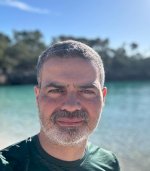
I am Professor of Neuromuscular Diseases at Newcastle University in the UK. Interested in basic and clinical research.
Ultrasound and MRI diagnostics
In this talk I will discuss the indications of muscle ecography and muscle MRI in the diagnosis and follow-up of patients with neuromuscular diseases. I will present results of several studies describing the mean features that allow us to identify pathologic changes in the muscle of patients with NMDs. Moreover, we will discuss how to use these techniques to help in the diagnosis process. I will also describe different quantitative muscle MRI techniques and present results of research studies showing their utility for the follow-up in natural history studies and clinical trials. Finally I will present new MRI techniques that could provide valuable information for the study of neuromuscular diseases.

Coordinator of the ERN EURO-NMD since 2018 and co-coordinator from 2016 to 2017. Key Expertise: Board-certified neurologist and neuropathologist with long-standing clinical and research expertise in neuromuscular disorders. Expertise in rare disease policies.
Muscle biopsy assessment
During this talk, we will discuss the basics of muscle biopsy analysis and possible future applications. We will consider pre and post-muscle biopsy aspects that allow us to achieve the best diagnostic yield. We will consider the best practices to perform the biopsy, which techniques can be used, and what can be learnt from it. We will discuss how to read a muscle biopsy considering the normal aspects of muscle and the common pathological changes using for this some clinical cases as examples. Muscle biopsy has been part of the diagnostic workup in patients with neuromuscular diseases since the 1960s. Although diagnostic algorithms for some muscle diseases have changed with the advances in genomics, we will discuss how muscle biopsy can evolve and be part of this new era.
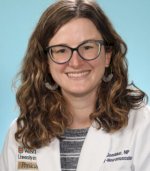
Pediatric nurse practitioner with over 10 years of nursing experience, trained in the unique needs of children with neuromuscular diseases
Outcome measure assessment and live patient presentation
This course is intended to provide an overview of the approach to a patient evaluation. The path to diagnosis and key elements of the physical examination and decision-making process will be reviewed. Live patients will be in attendance to provide their experience and perspective, as well as enable demonstration of key examination and evaluation elements. General recommendations for ongoing care considerations to ensure proactive management of the changing patient condition to maximize independence and manage decline with dignity will be presented. This interactive session is designed to engage attendees and pull together key themes across the pre-Congress teaching course.

Dr. Iammarino specializes in outcome measure research in neuromuscular disease at The Abigail Wexner Research Institute of Nationwide Children's Hospital's Center for Gene Therapy.
Outcome measure assessment and live patient presentation
This course is intended to provide an overview of the approach to a patient evaluation. The path to diagnosis and key elements of the physical examination and decision-making process will be reviewed. Live patients will be in attendance to provide their experience and perspective, as well as enable demonstration of key examination and evaluation elements. General recommendations for ongoing care considerations to ensure proactive management of the changing patient condition to maximize independence and manage decline with dignity will be presented. This interactive session is designed to engage attendees and pull together key themes across the pre-Congress teaching course.

Tiffany Johnson earned a B.A. in Speech and Communication Studies from Clemson University and a M.S.Ed. in Speech-Language Pathology and Audiology from Old Dominion University. In 16 years of practice as a speech-language pathologist, she has worked with pediatric and adult patients in in a variety of settings. She has spent the last five years working as a SLP in the acute care setting at the Medical University of South Carolina specializing in the treatment of oropharyngeal dysphagia, motor speech, cognitive-communication, and language impairments. Additionally, she is one of the SLPs who works alongside the members of the MUSC’s Interdisciplinary ALS Team.
Outcome measure assessment and live patient presentation
This course is intended to provide an overview of the approach to a patient evaluation. The path to diagnosis and key elements of the physical examination and decision-making process will be reviewed. Live patients will be in attendance to provide their experience and perspective, as well as enable demonstration of key examination and evaluation elements. General recommendations for ongoing care considerations to ensure proactive management of the changing patient condition to maximize independence and manage decline with dignity will be presented. This interactive session is designed to engage attendees and pull together key themes across the pre-Congress teaching course.

Henry J. Kaminski, MD is the Meta A. Neumann Professor of Neurology at the George Washington University. He has performed clinical, translational, and basic investigations related to myasthenia gravis for over 25 years. Dr. Kaminski established as principal investigator the NIH Rare Disease Clinical Research Network site, MGNet in 2019.
Neuromuscular fatigue
Fatigue is one of most vexing complaints that a physician needs to address and is common to nearly all diseases, which can make diagnosis and effective treatment a challenge. Two broad categories of fatigue have been proposed. One is the objective reduction of muscle force generation leading to compromise of physical performance over time. The best examples of such are seen with neuromuscular transmission disorders and metabolic myopathies, but also cachexia produced by cancer or normal aging. Two is perceived fatigue, which an individual’s experiences a sensation that they need to expend greater energy to perform typical activities. Here, the fatigue experienced by patients with Parkinson’s disease and multiple sclerosis comes to mind, in which the degree of objective deficit is not matched by complaints of fatigue. Research in this area is compromised by the difficulty in development of outcome measures to differentiate the complex nature of fatigue in a patient-centric manner. The presentation will provide broad background on the definition and causes of fatigue with a particular focus on myasthenia gravis, which manifests with neuromuscular and perceived fatigue.

Specialist in neurology, pediatric neurology and clinical neurophysiology. Her professional activities focus on neuromuscular disorders in children and adults. She is a Board Member of Polish Neurological Society and a vice-president of Polish Society of Pediatric Neurology, serves as an expert for implementation of National Plan for Rare Diseases.
EMG and Neurography examination
EMG and neurography (nerve conduction studies, NCS) are an extension of the clinical evaluation of the patient with neuromuscular disease (NMD). EMG and NCS allow to define the level of the lesion of the motor unit, the activity and distribution of the process (chronic vs acute, local vs. generalized) and, if necessary, can be used to monitor disease progression. Some test, such as motor unit number estimate (MUNE), or CMAP amplitudes are used as inclusion criteria or outcome measures for clinical trials. Repetitive nerve stimulation test and SFEMG play major role in the diagnosis of the neuromuscular junction diseases. Appropriate reference values have to be used when testing children and adults. Improved access to genetic testing changed diagnostic algorithms of the most common NMDs, such as eg. DMD, SMA or DM1, in which EMG and NCS are no longer needed for the diagnosis. At the same time new NCS diagnostic criteria for inflammatory neuropathies have been proposed. EMG and NCS are indispensable in the diagnosis of acquired NMDs, with an implementation of the current diagnostic criteria. In many hereditary NMDs EMG and NCS will be performed not at the beginning of the evaluation, but as a tool to characterize the phenotype of the patient and aid the interpretation of NGS or WES testing. The examples of the challenges in EMG and NCS will be provided and discussed with the workshop participants.

Professor Lowes conducts clinical research at Nationwide Children's Hospital and The Ohio State University. She specializes in innovative outcome measures and quantifying the natural history of rare diseases.
Outcome measure assessment and live patient presentation
This course is intended to provide an overview of the approach to a patient evaluation. The path to diagnosis and key elements of the physical examination and decision-making process will be reviewed. Live patients will be in attendance to provide their experience and perspective, as well as enable demonstration of key examination and evaluation elements. General recommendations for ongoing care considerations to ensure proactive management of the changing patient condition to maximize independence and manage decline with dignity will be presented. This interactive session is designed to engage attendees and pull together key themes across the pre-Congress teaching course.

Associate Professor of Neurology, Department of Neurosciences; Chief of the Neuromuscular Unit at the University Hospital Città della Salute di Torino, Italy; Responsible of the diagnostic and care services for neuromuscular disorders, Regional referral level (Nord-West Italy); Laboratory for Neuromuscular Diseases; PI in observational research projects and therapeutic trials. Coordinator of the HCP Città della Salute – EURO NMD
Swallowing weakness
Dysphagia, defined as a disorder of deglutition with impaired swallowing, is a common complication in several neuromuscular disorders (NMDs), and represents a life-threatening event when not timely recognized and treated.
The deglutition process is divided in: oral phase, including preparatory and transit subphases, when food is chewed and mobilized into the oropharynx; it requires appropriate sensation and coordination of tongue, soft and hard palate, and adequate masticatory and mimic voluntary muscles functioning; pharyngeal phase, when the bolus passes through the palatoglossal arch and the upper esophageal sphincter (UES) under involuntary muscles control, to protect the airways from aspiration; and esophageal phase, when the food bolus passes the UES and goes into the stomach by the smooth muscles peristalsis.
A physiologic deglutition process matures after the sixth month of life and requires the integrity of bulbar anatomic systems, including motor neurons, cranial nerves, skeletal and smooth muscles. Swallowing impairment differs considerably in NMDs according to their etiology, in terms of clinical presentation, therapeutic options, and prognosis. Typical symptoms include poor handling of the oral bolus, upper laryngeal penetration, aspiration and choking. Complications include ab ingestis pneumonia, dehydration, and weight loss in already fragile patients.
Recent general recommendations to manage dysphagia can be utilized for NMDs; more specific protocols for ALS, SMA and hypertonic UES in OPMD have been published. However, a recent survey highlighted the absence of defined protocols for evaluation and training of neuromuscular dysphagia in different European Centers, and guidelines are necessary in the future to reduce delayed diagnoses and treatment.

Dr Ravenscroft is an NHMRC Emerging Leadership Fellow at UWA and leads the Rare Disease Genetics and Functional Genomics Group at the Harry Perkins Institute.
Genetic assessment
Increasingly, genetic testing is becoming a frontline tool in the diagnosis of patients that present with neuromuscular diseases. Massively parallel sequencing, new informatic tools and optical genomic mapping is ushering in a new era in molecular diagnostics for neuromuscular diseases and novel disease gene discovery. Unbiased screening has resulted in blurring of the boundaries between different entities and expanding phenotypes associated with variants in a given gene. In this presentation A/Prof Gina Ravenscroft will discuss when to consider genetic testing, different types of genetic testing available and the value of clinical details and routine work-up in guiding molecular diagnoses. Through illustrative examples, A/Prof Ravenscroft will explore the role of genetics in neuromuscular diseases and the various considerations needed along the way to reaching a timely and accurate genetic diagnosis. Drawing on her research experience, A/Prof Ravenscroft will also discuss synergies across diagnostic and research centres and the benefits of an integrated diagnostic-research team.
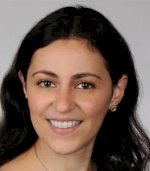
Katherine Ruzhansky, M.D. MS, is Associate Professor of Neurology, Neuromuscular Division Chief and Director of the EMG lab at MUSC. She earned her medical degree from Albany Medical College and completed her neurology residency at Yale-New Haven Hospital. Dr. Ruzhansky then completed a fellowship in clinical neurophysiology, followed by further fellowship training in peripheral neuropathy at Columbia University-NY Presbyterian Hospital. Dr. Ruzhansky joined MUSC's neurology division in August 2014. Her clinical and academic interests include electrodiagnostic testing, and diagnosis and management of adult neuromuscular disorders.
Outcome measure assessment and live patient presentation
This course is intended to provide an overview of the approach to a patient evaluation. The path to diagnosis and key elements of the physical examination and decision-making process will be reviewed. Live patients will be in attendance to provide their experience and perspective, as well as enable demonstration of key examination and evaluation elements. General recommendations for ongoing care considerations to ensure proactive management of the changing patient condition to maximize independence and manage decline with dignity will be presented. This interactive session is designed to engage attendees and pull together key themes across the pre-Congress teaching course.

Research Interest: Through a combination of state-of-art methods and a large network of international collaborators, the recently set up Savarese group aims to dissect the molecular mechanisms underlying the often-observed discordance between the identified genotype and the expected phenotype in patients with neuromuscular diseases, a class of diseases affecting muscular function. https://www.folkhalsan.fi/en/knowledge/research/genetics/group-savarese/
Distal weakness
Distal myopathies are primary muscles diseases due to mutations in over 20 genes. The clinical presentation at the onset includes a weakness of the muscles of the forearm, hands, lower leg or feet. However, the age of onset, clinical presentation, disease progression, muscle involvement, and histological findings are extremely variable.
An increasing number of genes and variants associated with a distal myopathy have been recently identified. Moreover, different variants in the same gene may cause either dominant or recessive forms. Currently, we are without a comprehensive understanding of the genotype-phenotype correlations.
We will cover the genetic and clinical features of distal myopathies, highlighting the most recently identified forms. We will also review their pathomechanisms and the current steps towards a diagnosis, using the most advanced methodologies. Finally, we will discuss the main technical and interpretative challenges.
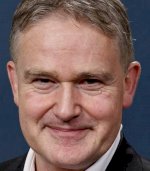
Benedikt Schoser is trained neurologists, neurophysiologist, neurointensivist, palliative medicine doctor. He is a professor of Neurology, at the Friedrich-Baur-Institute, LMU Munich, Germany. He is a long-term member of the WMS organizes the WMS teaching course, and is a member of the WMS executive board. Benedikt's special interests are multisystemic neuromuscular disorders, translational research.
How to assess adults
I will summarize a clinical Gestalt approach for assessing adults living with neuromuscular disorders. The German word ‘Gestalt’ means pattern, structure, configuration, or shape. In the early 1900s, the so-called Berlin School of Gestalt psychology developed a more profound concept of human perception based on the five Gestalt principles: Proximity, Similarity, Continuity, Closure, and Connectedness.
Today, designers use these principles to organize content for visually pleasing and ease of understanding, for example, for web content Gestalt approach is a theory on transforming clinical perceptions into coherent, integrative holistic constructs, a significant difference from phenotyping. Gestalt implies that a clinician has the learned skill to brand clinical indirect decisions without complete information by generating solutions from generalizations. We describe this pattern recognition as a heuristic approach to decision-making. Knowledge and experience sustain top-down decision-making accuracy as experienced clinicians have better pattern recognition skills. The Classic Gestalt approach is quick and straightforward but requires much practice. My talk will help to start this type of approach.

My main fields of research are faciocapulohumeral dystrophy (FSHD) and congenital myopathies.
Limb girdle weakness
In patients presenting with limb girdle weakness, there is a wide range of inherited and acquired diagnosis that should be considered.
Limb-girdle muscular dystrophy is the first group consisting of inherited disorders with progressive weakness of muscles around the hips and shoulder, leading to a loss of muscle strength and bulk over a number of years. Onset may occur in childhood, adolescence, young adulthood, or even later. Helpful clinical features that help to differentiate the > 20 subtypes include: predominant upper girdle weakness, disproportionate respiratory muscle involvement, distal weakness, hip adductor weakness, calf hypertrophy, contractures and cardiac involvement. Other genetic myopathies presenting with limb girdle weakness are (late-onset) Pompe disease, facioscapulohumeral muscular dystrophy and Becker muscular dystrophy. While there are no treatments which directly reverse the muscle weakness associated with these inherited condition, supportive treatment can decrease the complications.
The second large group of causes of limb girdle weakness are acquired myopathies, including inflammatory myopathies, toxic myopathies and myopathies caused by endocrine disturbances. In elderly patients, there is often a combination of acquired causes leading to gradually progressive limb girdle weakness.
Finally, a number of non-myopathic causes should be considered, including auto-immune neuromuscular junction disorders (Lambert-Eaton myasthenic syndrome) and plexopathies (neuralgic amyotrophy), motor neuron diseases and peripheral nerve diseases (such as CIDP_ The disease course and pattern of additional symptoms (sensory disturbance, hyperreflexia) are important clues to the localization and etiology. The treatment possibilities of these two latter groups depend on the specific etiology.

Karim Wahbi is Professor of Cardiology at the University of Paris, France and head of the reference centre for neuromuscular cardiomyopathies in Cochin Hospital, Paris. He completed his cardiology internship and residency at the University of Paris Descartes. He specialises in the clinical management of patients with cardiomyopathies with a specific expertise in neuromuscular diseases. Key areas of clinical and fundamental research for Pr. Wahbi are prevention of heart failure and sudden death and the study of molecular mechanisms underlying neuromuscular cardiomyopathies.
Heart involvement
Heart involvement is very common in patients with neuromuscular conditions, genetic and inflammatory, and has a major impact on patient quality of life and vital prognosis. This course will summarize the main clinical features, impact on prognosis and therapeutic approaches for neuromuscular cardiomyopathies, including DM1, dystrophinopathies, laminopathies, and other conditions at high cardiac risk.

Dr. Conrad “Chris” Weihl MD/PhD is a Professor of Neurology and Head of the Neuromuscular Section at Washington University School of Medicine in St. Louis, Missouri, USA.
Outcome measure assessment and live patient presentation
This course is intended to provide an overview of the approach to a patient evaluation. The path to diagnosis and key elements of the physical examination and decision-making process will be reviewed. Live patients will be in attendance to provide their experience and perspective, as well as enable demonstration of key examination and evaluation elements. General recommendations for ongoing care considerations to ensure proactive management of the changing patient condition to maximize independence and manage decline with dignity will be presented. This interactive session is designed to engage attendees and pull together key themes across the pre-Congress teaching course.

Neurologist, neurophysiologist and doctor for palliative care at the Department of Neurology, Friedrich-Baur-Institute, Ludwig-Maximilians-University Munich, Germany. Experience in intensive care and rehabilitative neurological medicine. Research mainly in myotonic dystrophies, glycogen storage diseases and myasthenia gravis. Medical qualification 2004 and Dissertation 2005 at the Technical University of Munich, Diploma in Health Economics 2005 in the Switzerland, Emergency Medicine 2009 in Munich; Neurologist 2012 and palliative care 2019 in Munich, Germany.
Respiratory weakness
Dysfunction of the respiratory system typically causes hypercapnic and hypoxic respiratory failure with variability in degree, progression, and clinical symptoms. In contrast to lung diseases with altered perfusion and/or diffusion, most neurological conditions affecting ventilation are caused by an impaired breathing pattern and/or insufficient respiratory muscle pump function, which results in acute, chronic, or acute-on-chronic hypercapnia at first and hypoxemia at later stages. Thus, for an early and correct diagnosis and sufficient treatment, knowledge of the origin of hypoventilation is essential. Depending on the disease, respiratory dysfunction can occur on one or more levels: central neurons including the upper motor neuron and specialized respiratory pacemaker neurons, lower motor neurons, peripheral motor nerves, the neuromuscular junction, thoracic compliance including skeletal deformities, and the muscle itself. The Pre-WMS teaching course on respiratory weakness will highlight typical neuromuscular disorders with respiratory impairment, recommended diagnostics, and treatment.
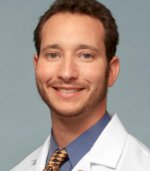
Professor of Neurology in the divisions of neuromuscle and child neurology, 15 years clinical experience including expertise in neuromuscular ultrasound, and in the last few years I have been the co-director of the pediatric neuromuscular clinical research unit where I have served as site PI for over 20 clinical trials in DMD and SMA.
Outcome measure assessment and live patient presentation
This course is intended to provide an overview of the approach to a patient evaluation. The path to diagnosis and key elements of the physical examination and decision-making process will be reviewed. Live patients will be in attendance to provide their experience and perspective, as well as enable demonstration of key examination and evaluation elements. General recommendations for ongoing care considerations to ensure proactive management of the changing patient condition to maximize independence and manage decline with dignity will be presented. This interactive session is designed to engage attendees and pull together key themes across the pre-Congress teaching course.